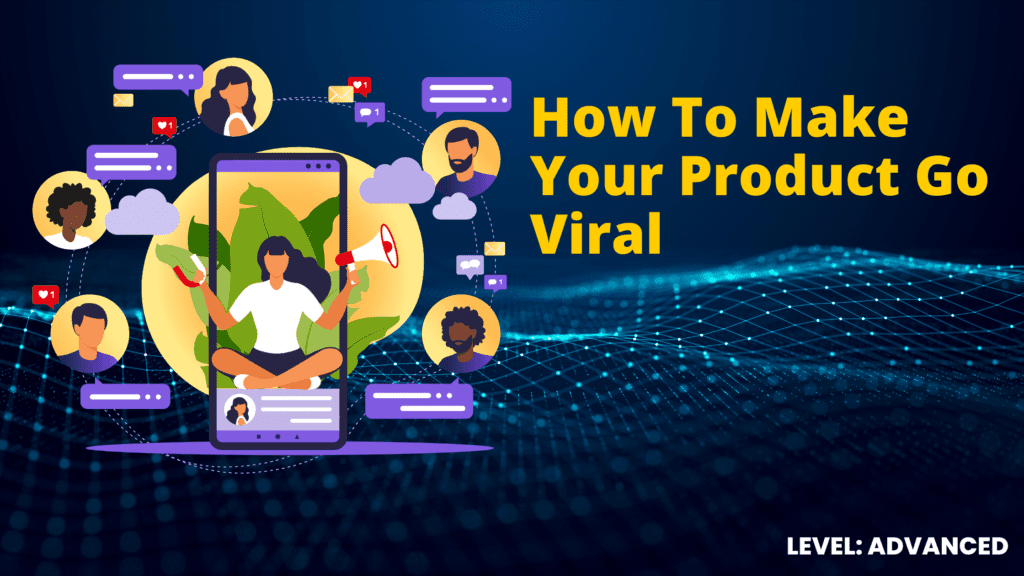By using the science of viral disease spread
The concept of virality is such an interesting one. It is studied, for obvious reasons, by medical scientists and epidemiologists and a host of other “ologists.” However, because the primary concern of these studies is how humans interact with one another, virality isn’t a topic confined to those interested in healthcare.
Scientists also study social networks with many of the same variables. This covers the spread of information, ideas, news, and even behavior.
But how is any of that relevant to ecommerce?

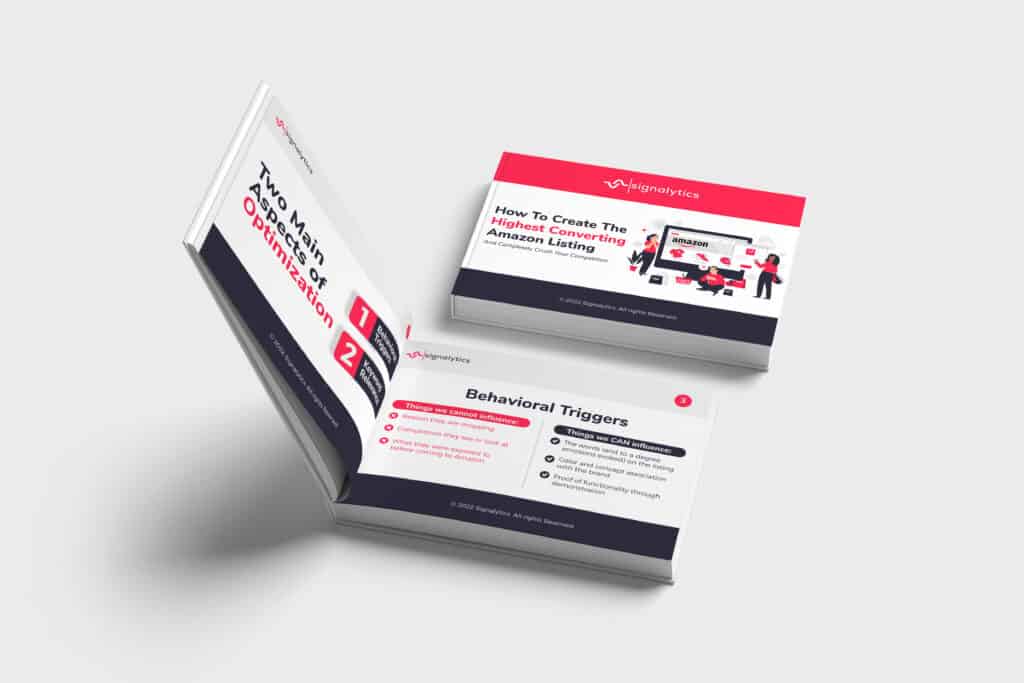
Get Our Internal Amazon Listing Optimization Operating System and increase conversions by 18%+ HERE 👇
Well, when you are trying to sell something, you are trying to change people’s behavior. Think about it. Whether you sell a product or a service, if you want someone to buy it, they either have to:
- Change their behavior to stop using a competitor and use your product or service instead.
- Adopt a new behavior and start using your product or service for the first time.
In either case there is a behavior requirement. For that reason, the scope of this article is to introduce you to the concept of using marketing to change behavior.
The reason this is such an important topic is because, up until now, you were probably taught a LOT about how to spread the word about your products, and how to get as many eyeballs as possible on your offer. And chances are, you were taught WRONG.
How Information Goes Viral
First let’s go over how information goes viral. News, for example, is a great illustration of viral information we see almost daily. Something happens on the other side of the world, and within seconds we see it in Tweets and FB memes or video clips.
An extremely common misconception is that this happens because influential people at the center of large networks spread it. This idea is the reason why influencer marketing is so popular. And it makes logical sense. A person, connected to MANY other people, that shares news will get that news to the most amount of people at once.
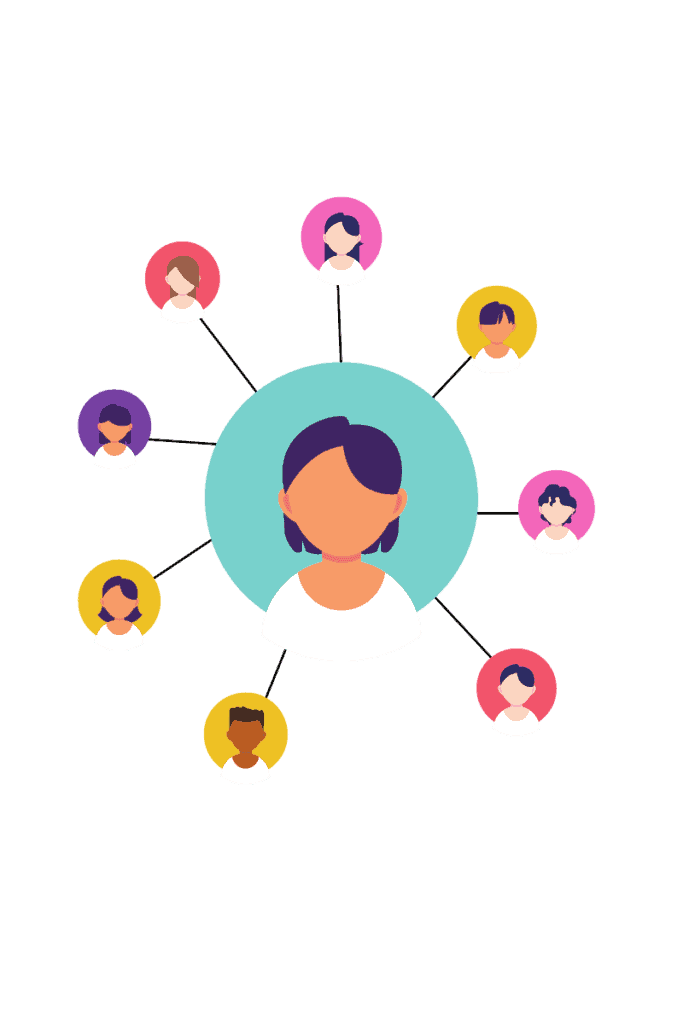
In reality, it rarely plays out that way. What actually happens is the information spreads from the outside in.
This seems super counterintuitive, until you understand a bit about human nature. See, we humans are social creatures. We’ve evolved many herd instincts as a matter of survival that were incredibly helpful to our ancestors out in the wilderness. Some of those instincts are still with us, dormant but alive.
One such instinct is to follow the herd. We feel safer knowing others are taking the same action. That’s why if we see people running, many of us will run in the same direction (to escape danger). That’s also why we trust the restaurant with the long line versus the one with no one in it.
But when following the herd, do we just do whatever others are doing?
No. Actually in most instances we need to see others in our own social groups doing it too. The interesting thing about humans is, it isn’t the number of network members doing something that convinces us we should do it too, but the percentage of our total personal network.
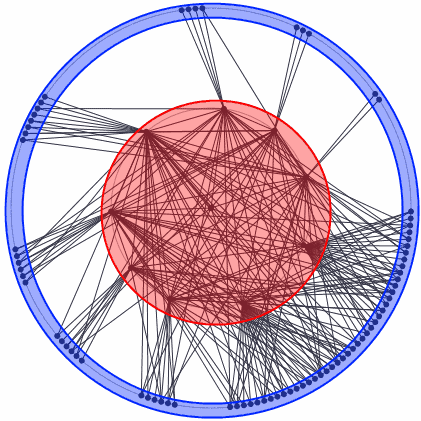
That means, if we only have four people in our network and two of them participate in a trend (for example), then 50% of our network is doing it. That’s very persuasive. Likewise, if we have a large network and only a very small percentage of that network participates in a trend, we are much more swayed by the larger percentage not doing it.
And this is why information spreads from the outside of a network inward. It starts with the people who have smaller social groups. As they all begin to spread the information, then those with larger networks take notice and share it too. Then it makes its way to the influencers in the center. By the time it reaches them, enough of the influencer’s large network has begun sharing the information, so the influencer feels it’s ok to do it also. Then they amplify it and it spreads even farther.
How Behaviors Go Viral
Information, news, and silly trends are one thing. Behaviors are something entirely different. See, it’s easy for people to spread news, as that doesn’t call for any judgment. It’s socially safe. However, actively taking on a behavior, making a political stance, or supporting a movement…these will absolutely draw judgment from peers.
For that reason, behaviors meet with more resistance. This resistance makes spreading work a bit differently. Instead of spreading like wildfire through loose networks of individuals only slightly connected to the rest of a larger network, behaviors require much tighter connections and lots of social group overlap.
This means, in order for new behaviors to be adopted, people need to see their friends and family adopt them. People need social reinforcement from those they trust.
The added friction doesn’t necessarily mean behaviors spread slower or less “virally.” It just means it spreads through networks differently.
Weak Ties vs Strong Ties
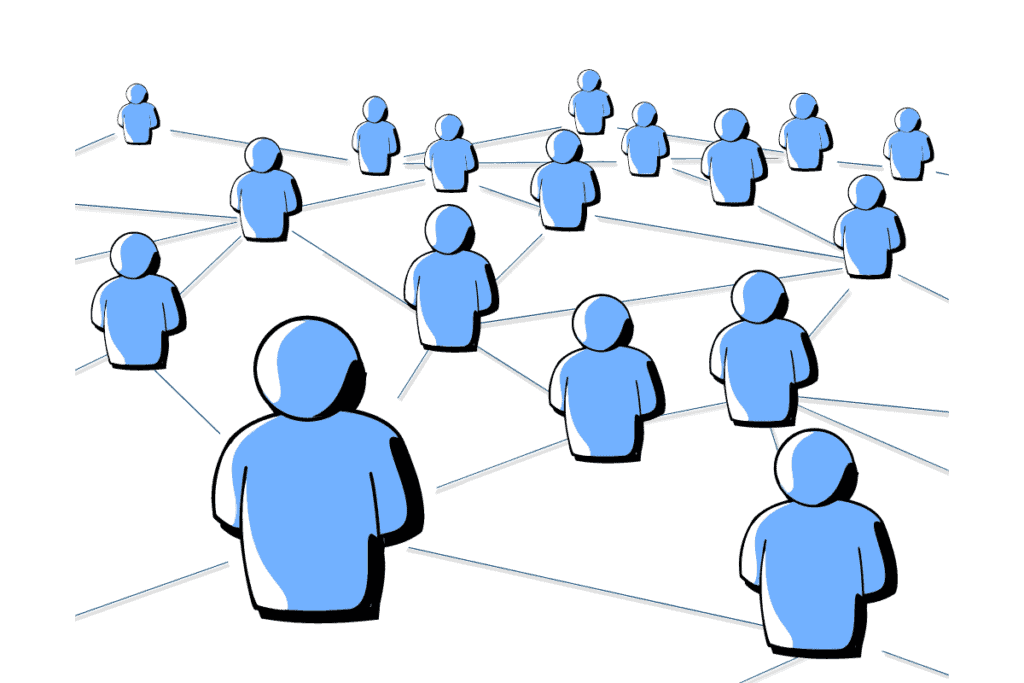
The primary difference between the spread of information and the spread of behaviors is that one requires only “weak ties” to spread while the other requires “strong ties.”
Weak ties are your acquaintances; neighbors, co-workers, the mail lady you see every week at the post office. These are relationships with people that you have little to no social group overlap with. That means their friends are not your friends.
The reason weak ties spread information so quickly is because weak ties are formed everywhere. You meet a guy at the gas station up the road from your house, that’s a new weak tie. Strike up a convo with a new gym member? Another weak tie.
Taking information from them at face value doesn’t require a lot of trust. Typically our initial judge of character will suffice.
But behaviors require commitment. And commitment requires more trust. For this reason we need strong ties. Strong ties are relationships where there is a closer bond, and often a lot of social group overlap. Your friends and their friends know each other.
So if you decide you like a new band, or want to style your hair in a different way, you have multiple friends that are going to look at that behavior and judge it. They may even discuss amongst themselves whether they approve of it.
The Role of Influencers (and Why They Are Often Ineffective)
Most influencers are at the center of a wide network of weak ties. While some do manage to foster real relationships within their network, many are merely an influencer (or activist, pundit, or talking head).
This is why influencer marketing campaigns can be so hit-or-miss. As we’ve established, getting someone to use your product or service is asking for a change in behavior. As such, strong ties are much more effective at motivating that change.
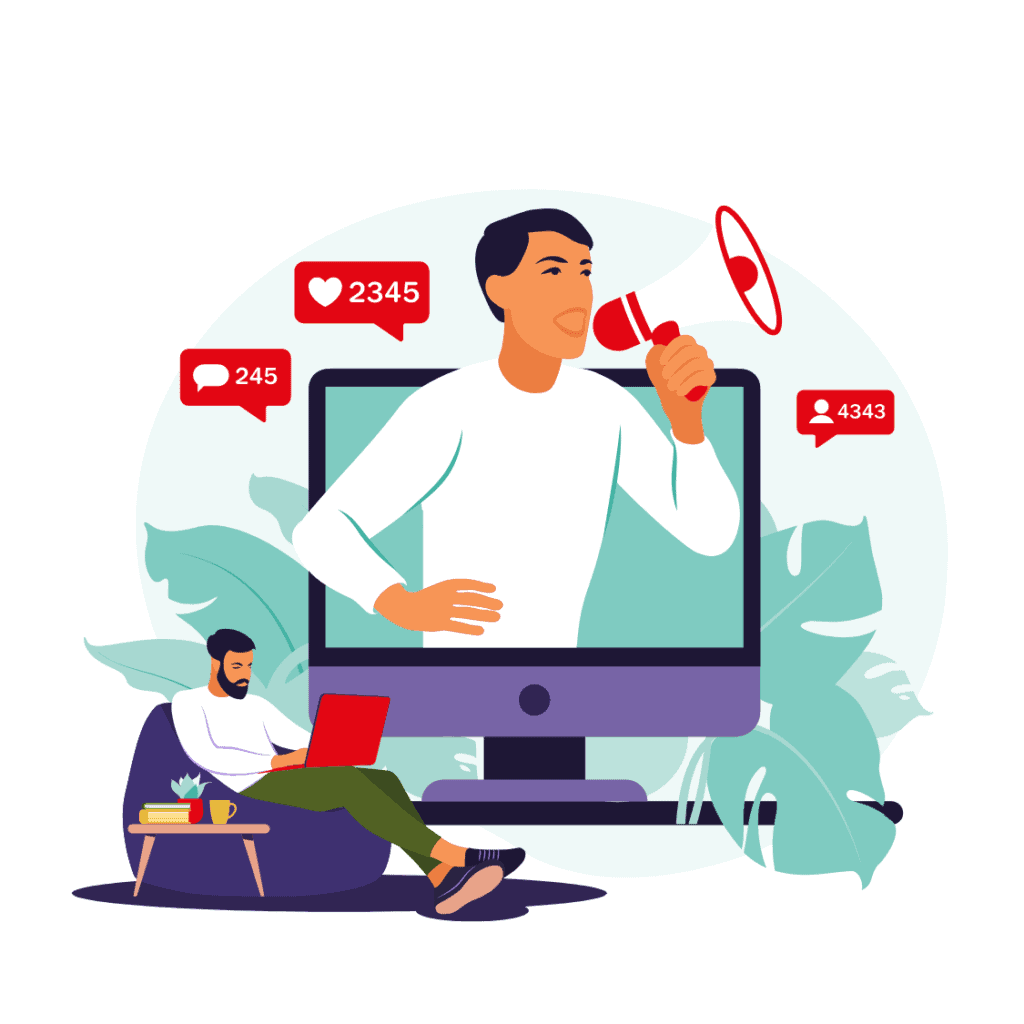
Trying to spread behavior change through weak ties is much more difficult.
A great example of this was the protests in Arab Spring. Activists took to social media (mainly Twitter) to rally people to their cause. While much of what they shared went viral, when it came time to physically show up to protests, people were hesitant.
This was because they were different from the influencer activist. They had jobs, kids, school, work, etc. The protests didn’t come alive until ordinary people…people with smaller networks and strong ties…began to participate.
As mentioned before, influencers are great at amplifying news, information, and ideas. As such, in the context of ecommerce, they are also great at spreading brand awareness. That awareness may not lead to the number of sales that you hoped for, but it will help make your brand more available in the mind of future customers.
How To Reach the Periphery
Ok, so we have a product/service and we want to convert as many people into customers as possible, that means we’d love for our brand or marketing to go viral. Now we know that virality starts at the outskirts of social networks, otherwise referred to as the “periphery.”
How do we reach the periphery?
A common tactic in marketing and advertising is to recruit users with the largest networks, or target areas that are most densely populated, or try to reach broad interest groups.
Perhaps that is the wrong tactic. If the idea is to reach the outskirts of networks, you may consider doing the opposite of those tactics.
In advertising:
- Consider geo-targeting smaller populations.
- Consider targeting more niche interests (whose users tend to have interest overlap with your brand’s theme).
- Consider targeting lower income households.
In social media marketing:
- Consider recruiting “nano-influencers” who are mostly just regular people who happen to use social media frequently.
- Consider one-to-one DM campaigns (where you or a member of your team direct message followers).
How To Ride the Wave of Strong Ties
Once you have a strategy in mind for reaching the network outskirts, next you want to make sure your message is being shared through strong ties. For this you’ll want to take a page from a couple of great examples:
Twitter Bot-Net
A large scale experiment was conducted back in 2016 on Twitter, as the platform is a fantastic microcosm of viral social ideas and behaviors.
Experimenters set out to study how things go viral and the parameters included 39 bots. The hypothesis was that while other studies showed constant exposure was a key factor in idea or behavior adoption, the prevailing notion that the exposure could come from a single person at the center of a large web of influence was false.
Basically, one person constantly promoting an idea won’t do much to influence behavior, regardless of how many followers they have.
And the experiment proved this right. Bot accounts with large followings that promoted statements of positivity and well-being got far less retweets and engagement.
However, when an idea was parrotted by multiple bot accounts, especially when those bot accounts had follower overlap, their tweets got significantly more engagement and shares that led to much broader reach.
The conclusion of the study was that almost anything (as simple as a positive statement or as complex as actual behaviors like getting a vaccine or supporting a social cause) will go viral if there is strong social reinforcement. When the concept is repeated by varying members of the same social network, this simulates strong tie network activity.
The Pals Battalion
During the first world war, the British army was the only one involved that didn’t have a large conscripted force. They had professional soldiers, but there just weren’t enough for a war on a global scale.
They also lacked a surplus of recruits. British citizens didn’t see themselves as a fighting force and therefore few were inclined to volunteer. That is, until the pals battalion was adopted.
Realizing the army absolutely needed conscripted soldiers and also realizing their previous recruitment efforts weren’t very effective, British Army Director of Recruiting Henry Rawlinson had a brilliant idea. If citizens were assured that they would be able to deploy, serve, and return with their friends, they would be more willing to join.
With this new signing “perk” in mind, recruitment efforts were brought to the individual cities themselves. Recruiters would go into cities and rouse city employees with speeches of shared glory.
There were so many psychological triggers at play. First, when small groups of friends and colleagues joined together, this motivated other members of their social groups to join, especially if the groups overlapped.
Also, garnering their interest and getting them to show that interest in front of their peers added to their psychological need to remain consistent (they couldn’t say they were patriotic in front of their friends but then not act patriotic).
The best illustration of the absolute success of this campaign was the stock brokers battalion that consisted of over 1000 stock traders from Liverpool.
Marketing Campaign Ideas
Ok, let’s recap what we’ve learned:
- How news and ideas go viral
- How behavior changes can go viral
- The difference between weak and strong ties
- The role and effectiveness of social influencers
How do we take advantage of that knowledge and gain an edge on our competitors?
Here are a few ideas you could test in your marketing.
Referral rewards. Incentivize users to refer your products to their friends. As more friends in their network use your products/services you’ll continue to grow rapidly.
*Pro Tip. Don’t offer the incentive for the referrer, but instead the referred. Sure, people like rewards, free stuff, and value, but we like looking good in front of our peers even more. By giving the person they refer to you the reward, they get to be the hero and the referred person is incentivized as well as motivated to take advantage of your offer.
Referral gating. This is what the audio social platform Clubhouse did in the beginning. They would not let anyone join the platform without a referral code from another user. This not only created a situation where strong ties were using the product but it also made it exclusive.
But how would you do that with a physical ecommerce product?
For this you’ll have to either get the customer OFF the platform (like Amazon) and in contact with your brand, or you’ll have to bring them to the ecommerce platform yourself from external traffic. This can be done through ads and inserts (for example).
Once the customer is in contact with your brand you can offer additional products, perks, or other offers for referrals only.
Gift incentive. Double the price of your product, then offer a BOGO or reduce the price of additional units by 50%+ when purchased in bulk. When you do this, frame the promotion where the additional units are gifts.
If you can sufficiently motivate buyers to purchase your products as gifts, then by virtue of social groups all owning products from the same brand, you’ll grow immensely.
There are many ways to take advantage of human nature and psychological triggers like these, but hopefully our suggestions will be helpful.
And of course, the first step in ensuring your products are hitting the right psychological triggers is to have our team audit your listing(s). You can schedule a FREE listing audit here ⇒ https://ebooks.signalytics.ai/listing-audit-questionnaire/

